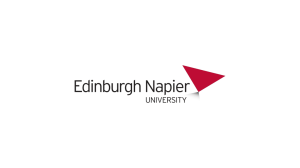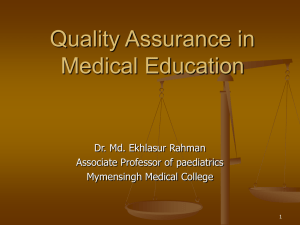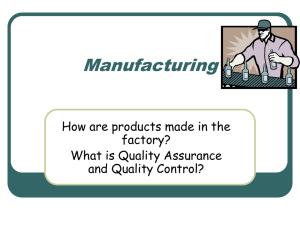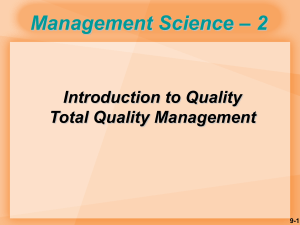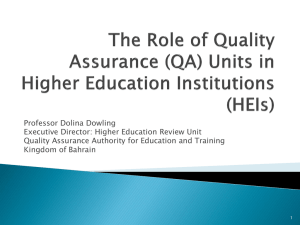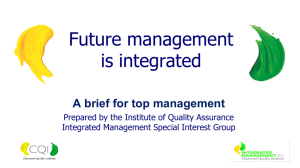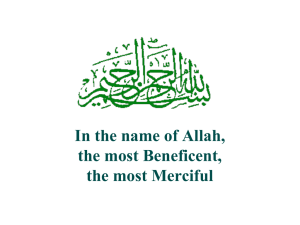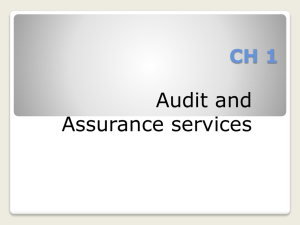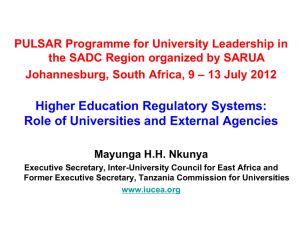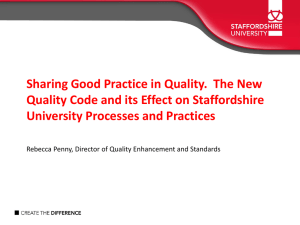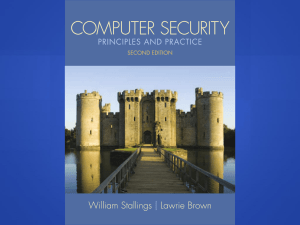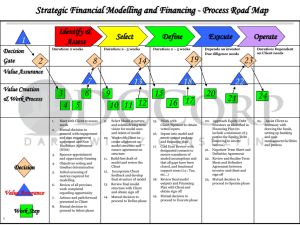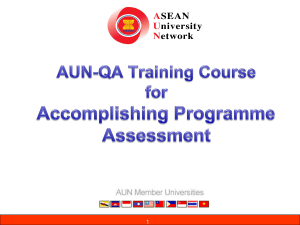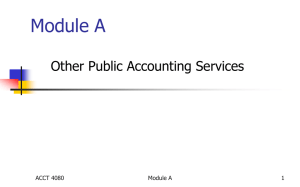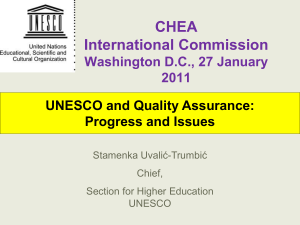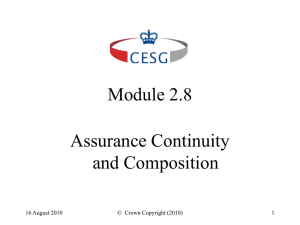to the presentation
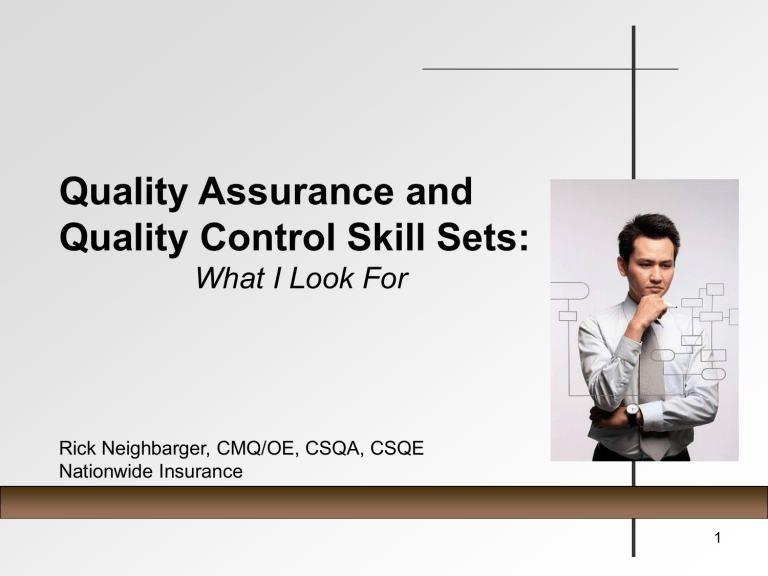
Quality Assurance and
Quality Control Skill Sets:
What I Look For
Rick Neighbarger, CMQ/OE, CSQA, CSQE
Nationwide Insurance
1
Approach
Definition of Terms
Skills/Competencies that make QA/QC practitioners successful
Ways to acquire/maintain these skills
2
What Exactly is Quality?
From CSQA Body of Knowledge
Producer’s View of Quality
Customer’s View of Quality
3
What Exactly is Quality?
From CSQA Body of
Knowledge
Producer’s View of Quality
• Doing the right thing
• Doing it the right way
• Doing it right the first time
• Doing it on time without exceeding cost
Customer’s View of Quality
4
What Exactly is Quality?
From CSQA Body of Knowledge
Producer’s View of Quality
Customer’s View of Quality
• Receiving the right product for their use
• Being satisfied that their needs have been met
• Meeting their expectations
• Being treated with integrity, courtesy and respect
5
Quality Assurance vs.
Quality Control
From CSQA Body of Knowledge
“Very few individuals can differentiate between quality control and quality assurance. Most quality assurance groups, in fact, practice quality control ….”
“Quality means meeting requirements and meeting customer needs, which means a defect-free product from both the producer’s and the customer’s viewpoint. Both quality control and quality assurance are used to make quality happen.”
6
Quality Assurance vs.
Quality Control
Question:
How do you hear the terms
“QA” and “QC” used or confused around you?
7
Quality Assurance vs.
Quality Control
From CSQA Body of Knowledge
Quality Control (QC):
processes and methods used to compare product quality to requirements and applicable standards
action taken when a nonconformance is detected
reviews and testing, focus on detection/ correction of defects before shipment of products
8
Quality Assurance vs.
Quality Control
From CSQA Body of Knowledge
Quality Assurance (QA):
set of activities, including facilitation, training, measurement and analysis
provides confidence that processes are established and continuously improved , to produce products or services that conform to requirements and are fit for use
9
Quality Assurance vs.
Quality Control
From CSQA Body of Knowledge
Quality Assurance (QA):
staff function; prevents problems by heading them off
promotes quality concepts, quality attitudes and discipline for management and workers
requires knowing how to make people conscious of the personal and organizational benefits of quality
faces major impediments from results-oriented management (perception of little need for a function that emphasizes managing and controlling processes)
10
Quality Assurance vs.
Quality Control
Are these activities QA or QC?
QC performance testing software
QA
QC
QA
conducting an internal audit of the performance test process writing test plans training staff on the document review process writing requirements documents
QC conducting document reviews on project work products
QA analyzing patterns of defects captured in document reviews
11
QA vs. QC Skills
What do I want a quality control practitioner to be good at?
breaking things! (to improve product quality)
attention to detail
technical skills: relevant platforms, apps, languages, tools
12
QA vs. QC Skills
What do I want a quality control practitioner to be good at?
The discipline of testing
test planning, design, execution
risk analysis
white box vs. black box testing
agile test techniques (where appropriate)
exploratory testing
13
QA vs. QC Skills
What do I want a quality assurance practitioner to be good at?
improving how we do things! (to improve process quality)
ambassadors, diplomats
trainers
patient and persistent
knowledge of process maturity models
(CMMI, ISO 9001)
in-depth experience in multiple roles in
SDLC and business
14
Skills Attainment &
Maintenance
How do I get these skills?
70/20/10 approach to adult learning
70% experiential: hands-on opportunities
20% relational: coaching/mentoring
10% traditional: formal training
15
Skills Attainment &
Maintenance
What: Traditional learning (10%)
Certifications and certification prep courses
• QAI CSQA, CSTE; ASQ
Vendor courses
• SQE, ESI, IIST
Conferences
• SQE STAR, QAI/ASQ
International/Regional
16
Skills Attainment &
Maintenance
How:
National/local organization memberships/meetings
Web page/mail list
Peer references
17
Skills Attainment &
Maintenance
What: relational learning (20%)
Job shadowing
Time with SMEs
Formal coaching/mentoring
18
Skills Attainment &
Maintenance
How:
Formal company program
Approach manager or a coworker who does it well
Extracurricular coaching
19
Skills Attainment &
Maintenance
What: Experiential Learning (70%)
Project assignments
Process improvement teams
(PITs)
Committees
20
Skills Attainment &
Maintenance
How:
Ask manager to help with upcoming opportunities
Join Process Improvement
Team (PIT)
Participate in/organize committees/initiatives
21
Recap
Quality assurance and quality control are different practices
Different skills are required for each practice
Several avenues available to acquire/maintain these skills
22
